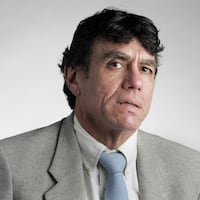The six bankers and the powerful senator came to Jekyll Island by private railroad car from the north.
If anyone asked, they were going duck-hunting, but their real — and secret — agenda was a bit more ambitious: shaping the financial system of the United States. Three years later, a new law created the Federal Reserve.
Officials this Friday will host a two-day conference that honors the 1910 gathering, while examining the Fed’s history, performance and future.
The 100-year commemoration comes as the Fed confronts a chorus of harsh criticism including calls for its abolition.
Critics include some members of congress and candidates for political office who argue the Fed, which writes the rules for banks and lenders, and can raise and lower interest rates, holds too much power over the economy — and uses it.
For consumers, that power shapes our monthly mortgage payment, the cost of a loan, our credit card rates. For companies, the Fed controls the cost of getting capital for investment or hiring.
The Fed can make the bond market attractive or chase investors into a frenzy of stock-buying.
Under the right circumstances, the Fed can boost production, profits and hiring — or chill them.
Already one of the country’s most powerful institutions, the Fed was recently given even more authority. The Fed is now the predominant regulator of financial firms, from banks to hedge funds.
The Fed even has power to set fees that customers pay for bank debit cards.
Trying to help the banks
Before the Fed, the United States’ financial system was brittle: Banks frequently couldn’t get the money needed to pay withdrawals. A run on a bank often meant its collapse. Few had confidence in the banking system. The Fed was created to bolster confidence of borrowers, bankers, companies and consumers by giving the financial system a backer.
It was an idea that took root on Jekyll Island.
That meeting was called by U.S. Sen. Nelson Aldrich of Rhode Island.
The country, which suffered through a nasty depression in the 1890s, had again run into trouble. A financial panic in 1907 destroyed a series of banks, paralyzed Wall Street and led to a short but severe recession.
Among the nation’s decision-makers, talk swirled about finding a way to prevent a repeat.
To the fore came an idea that had bitterly divided even the Founders: a central bank that could make loans in an emergency while buying and selling bonds to influence the cost of doing business day-to-day.
Alexander Hamilton thought a central bank was essential; Thomas Jefferson hated the very notion.
In Aldrich’s time, too, views were split. Some bankers desperately wanted a new institution, a deep-pocketed, independent bank that could stem panic and calm the system in moments of crisis.
Just as surely, many in the moneyed class loathed the idea of a powerful institution that could raise rates so much it would choke off their access to capital.
Moreover, by adding to the money supply when it wanted to lower rates, a central bank would be undermining the gold standard and undercutting the value of the dollar.
On top of that, bankers feared the bank would be a political creature carrying out populist vendettas against Wall Street.
In the midst of the debate, Aldrich was named head of a national commission to propose financial reform. He was pro-bank, but no wild-eyed radical. A Republican, he was chairman of the Finance Committee and close to Wall Street, related by marriage to the Rockefellers.
And the bankers he brought to Jekyll reportedly represented more than one-sixth — some said one-quarter — of the world’s wealth.
Knowing how controversial it could be, Aldrich took pains to keep discussions under wraps. Secluded for 10 days, the group debated a range of issues, finally hammering out a draft of a law to establish a central bank. Aldrich went public with the plan in early 1911. Perhaps not surprisingly, his commission endorsed the plan.
But Woodrow Wilson took the White House in 1912. He and his party rejected Aldrich’s plan. Yet the Federal Reserve Act that passed in 1913 contained many of the provisions of the draft from Jekyll Island.
Critics abound
A century later, the meeting at Jekyll Island still matters, but how it matters depends on your view of the Federal Reserve.
For Fed critics, the Jekyll session was a crucial misstep: away from the gold standard, away from unfettered capitalism, toward misguided centralization. For some conspiracy theorists, it was even more sinister, the stuff of treacherous banking families, secret societies, manipulation and even murder.
The meeting’s mission, in some ways, was not accomplished.
They had wanted a private system, like the Bank of England,” said Allan Meltzer, author of a three-book history of the Federal Reserve and professor of political economy at Carnegie Mellon University’s Tepper School of Business. “They also wanted a central bank, based in New York, a centralized authority. And that plan didn’t get activated because the Democrats won in 1912.”
The Republicans were the party of big banks and industry, while smaller banks and farmers had a louder voice in the Democratic Party.
The Fed came to include a dozen semi-independent regional branches and a board that included political appointments, but very little political oversight. And it was based in the political, not the financial capital.
“The issue in 1913 was not whether there should be a central bank, but who was going to run it,” Meltzer said. “The Jekyll people thought they should run it, and the Democrats said certainly not. That is why we ended up with a public-private partnership. And we did end up with a centralized system but it was centered in Washington, not New York.”
He gives the Fed high grades for its first decade and a half or so, when the purpose of the Fed was relatively narrow: stabilize the financial system.
“In previous financial crises, the interest rate would often get to 100 percent overnight,” Meltzer said. “The Fed did extremely well during the ’20s. By 1929, people had great confidence in the Fed.”
Then came the stock market crash and the Great Depression, when unemployment soared to 25 percent. Many economists now look back and say the Fed deserves much of the blame for the economic pain, since it let the money supply shrink and let hundreds of banks fail.
And some economists say the Fed had laid a trap for itself, setting up the economy for a fall.
During the 1920s, the Fed’s tolerance for allowing investors to buy stocks with borrowed money enabled a boom, but also set the stage for the crash, said Fred Bateman, economist at the University of Georgia’s Terry School of Business.
“I think the early Fed was very immature — a new organization feeling its way,” he said.
Handling a crisis
Since then, the Fed has faced only a few crises. Under Paul Volcker in the late 1970s, the Fed raised interest rates to excruciating levels to choke off inflation by chilling the economy. For consumers, that meant painful rates on mortgages and credit cards.
In the late 1990s, the Fed under Alan Greenspan stood back, using neither regulatory powers nor higher rates to dampen a frenzy of stock-buying. Then, when the bubble popped, the Fed rushed to lower interest rates.
That effort is blamed by some economists for fueling the bubble in housing. And as millions of homes were sold to people with a dubious ability to pay, the bundling of those mortgages became the “toxic” assets that intensified the crisis and virtually paralyzed the financial sector.
Several big lenders failed. Others would have, but were bailed out.
As the 100th anniversary of the Jekyll Island meeting approaches, the economy is slowly slogging through the debris left by the implosion of housing, and the central bank is acting very different than in the 1930s.
The Fed now is led by Ben Bernanke, a leading scholar and critic of the central bank’s actions during the Depression.
This time, the Fed’s Open Market Committee snipped short-term interest rates right down to zero and has held them there for more than a year-and-a-half.
Now, with the economy still struggling, the Fed is contemplating still more ways to grease the economic skids.
After all, unemployment is still high, businesses are not expanding, consumers are strapped with debt and demand in many sectors is weak, while credit is unavailable for many companies that do want to invest.
With the Obama administration blocked politically from any more stimulus spending, the Fed is now the only player with the muscle to potentially move the economy.
The Fed’s visibility has come with renewed criticism.
For instance, several Republican candidates for the Senate have attacked the Fed. Mike Lee of Utah charged the Fed with trying to dissipate the government debt by printing money. Rand Paul of Kentucky criticized the Fed for yanking the economy alternately through boom and bust.
His father, Ron Paul of Texas, has long called for the Fed’s abolition, a cry echoed by many libertarian candidates. Other critics have called for regular audits of the Fed’s books, but stop short of urging abolition.
The Fed will again survive an intensifying spiral of criticism, predicted Emory economic historian Leonard Carlson. “It’s at a peak,” he said. “I think it will calm down, but I think there may be some limitations [placed] on the ability of the Fed to act.”
Like the Supreme Court, the Fed faces little ongoing oversight, yet it is well aware of the surrounding political climate. That climate may ease if the economy improves.
In a move called “quantitative easing,” the Fed now seems poised to buy various assets, such as bonds, hoping to juice the economy by lowering longer-term interest rates.
Would Sen. Aldrich and his banker guests at Jekyll Island recognize today’s Federal Reserve, with its sometimes muscular, sometimes esoteric and often far-reaching policies?
“I think the answer has to be no,” said David Altig, Atlanta Fed senior vice president. “On the other hand, we are dealing with problems that would have sounded familiar. In that sense, they might feel a kinship.”
About the Author
Keep Reading
The Latest
Featured


